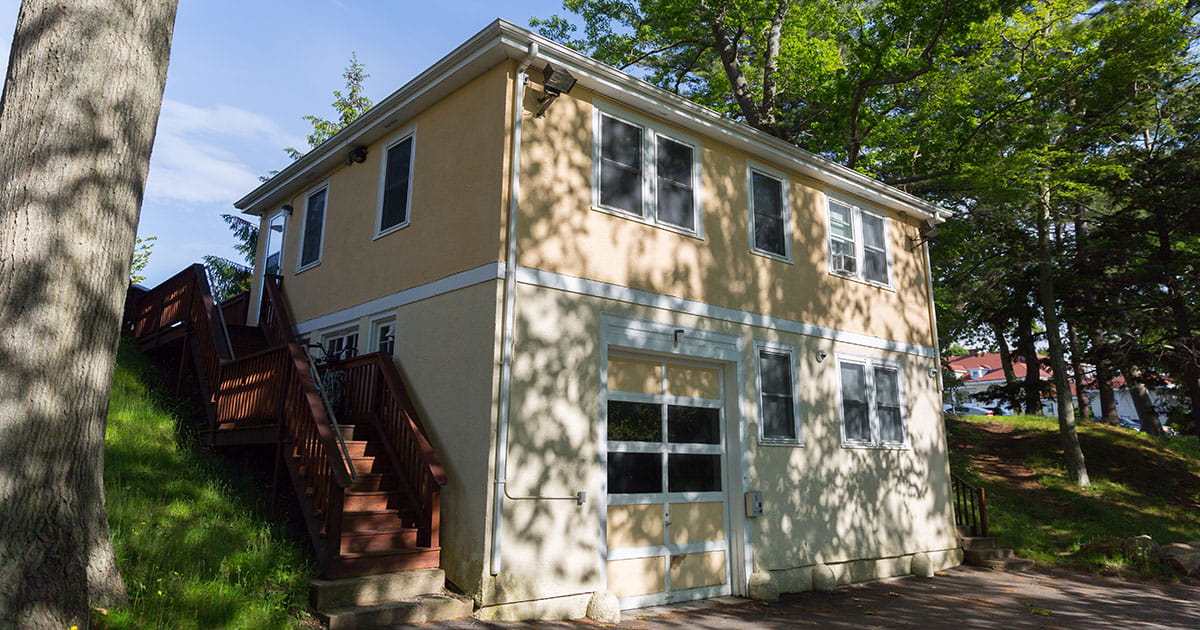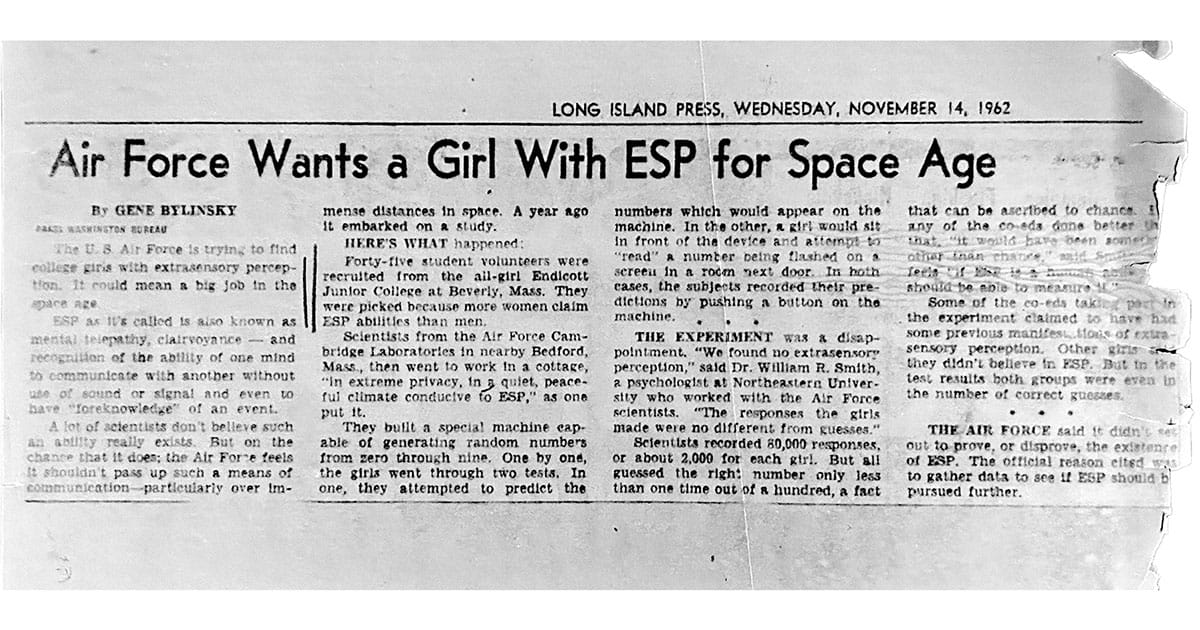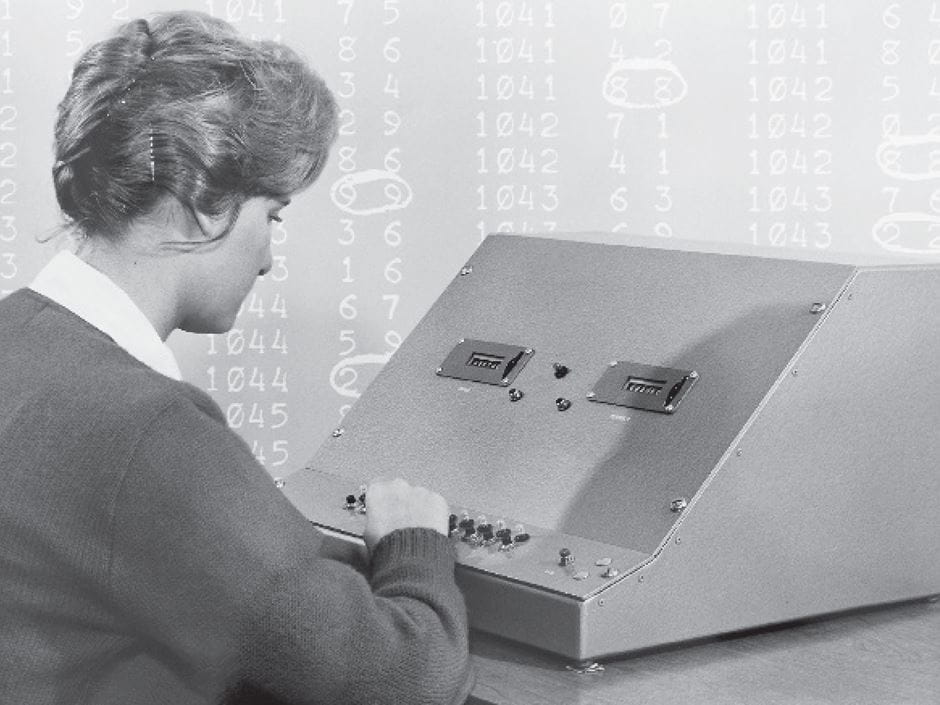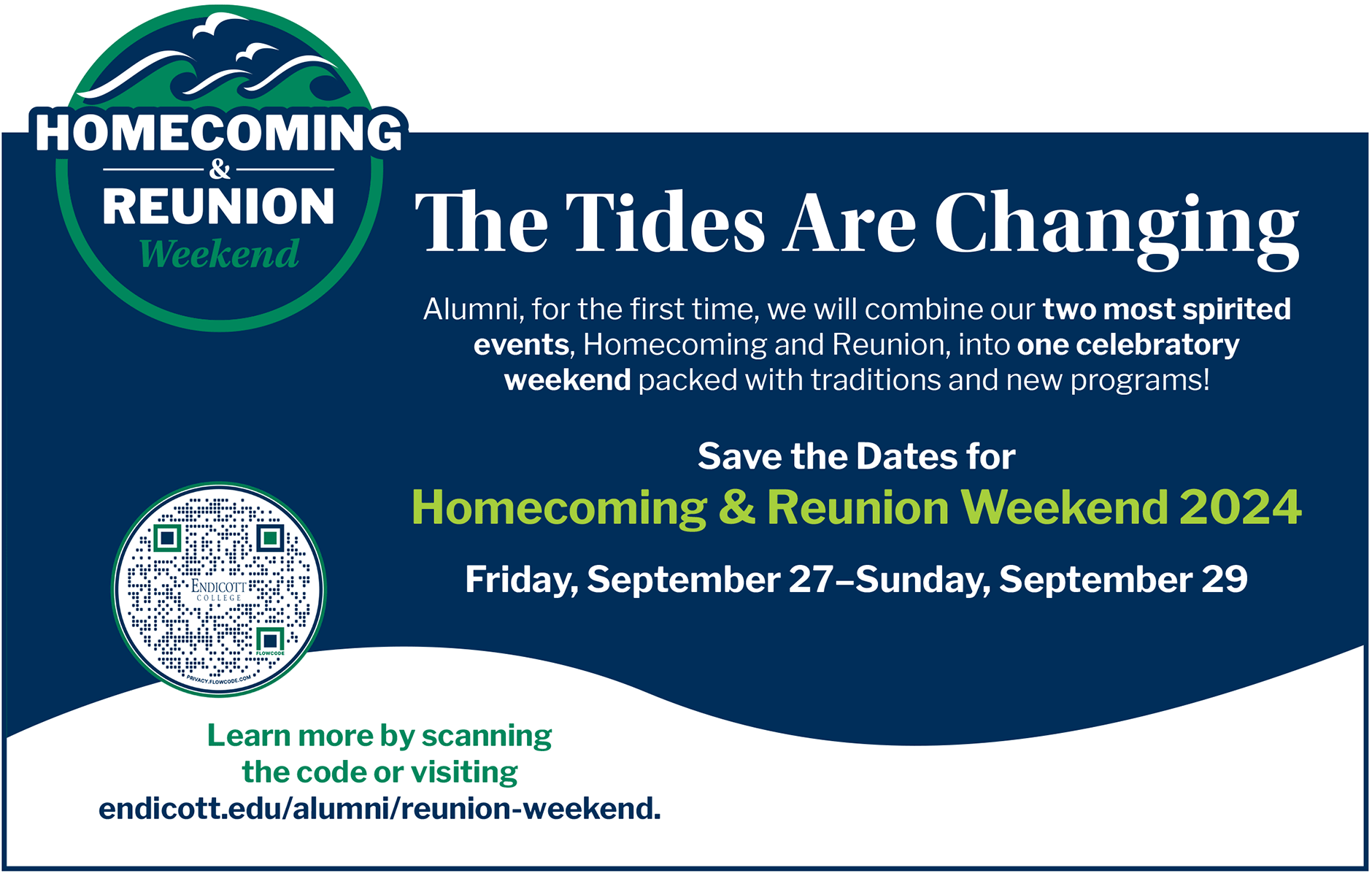The photos, taken in black and white as was typical in the early 1960s, don’t show the faces of the young women. Instead, we see their backs at a desk, the photos snapped in classified government secrecy to document a wild new experiment the U.S. Air Force was undertaking.
There is, however, one face in the photos—that of the VERITAC, a hulking gray machine with eyes that rotated and settled on random numbers and a smile of buttons marked zero through nine.
At first glance, you might think the young women were practicing their typing skills—only this was no typewriter, but a novel way to test for extrasensory perception, or ESP. Clairvoyance. Obtaining information through the powers of the mind.
For decades, this story lay hidden inside a plain manila envelope in the archives of the Diane M. Halle Library—photographs and newspaper clippings and typewritten missives that weave together an intriguing and little-known chapter of history involving the Cold War, paranoia, and supernatural powers.
And at the center of this story? The young women of Endicott Junior College.
Testing for extrasensory perception with a machine
It all started years before, in the late 1950s, when the U.S. and the Soviet Union entered another particularly tense moment in the ongoing Cold War.
The U.S. had become aware of the Soviets’ development of intercontinental ballistic missiles and of their secret 1962 installation in Cuba, where a nuclear attack against the U.S. could be launched within minutes. More mysteriously, though, between 1960 and 1966, “Russian ESP research went from a position of toleration to considerable official support,” according to a declassified CIA report made available in 2011.
In the Cold War arms race, had America fallen behind by failing to account for paranormal powers? Had the Soviets somehow harnessed the power to ascertain, supernaturally, no less, the plans, weapons capacities, and other intelligence of its main adversary, the United States?
The U.S. Air Force got to work on catching up. A team of researchers was assembled—including electronics engineer Everett F. Dagle, physicist John Mott-Smith, mathematician Margaret D. Hill of Air Force Cambridge Research Laboratories (AFCRL), and psychologist William Reed Smith of Northeastern University—and so began the search for an ideal setting for the experiments.
According to their subsequent report, Testing for Extrasensory Perception With a Machine, released in May of 1963, the researchers wanted an environment that wasn’t a laboratory, but a building secluded enough to not distract the participants. Notably, the researchers also wrote: “Some authorities in parapsychology believe that the ESP process is often an intuitive one. Additionally, women are sometimes believed to be more intuitive than men. Therefore, it was felt that our sample responses would be optimized if only women were tested.”
An oceanfront college was the farthest thing from a lab and, at the time, Endicott Junior College was exclusively a school for women. But in a region where women were famously persecuted during the Salem Witch Trials, it’s also deeply ironic that Endicott became a modern-day nexus for testing them for otherworldly powers.
Then-President George O. Bierkoe authorized the experiments, with facilities and students provided at no cost to the Air Force. Testing began on January 22, 1962, and continued every school day until May 31, inside a small cottage that still stands on the grounds of Endicott’s Wylie Center & Tupper Manor.

“Students were scheduled for tests at the most convenient times and as class schedules would permit. Subjects rarely failed to keep their appointments, and there was very little free time between test sessions,” the researchers wrote.
At the heart of their work was the VERITAC—a boutique device manufactured in Gloucester and designed by Dagle. By randomly generating numbers 0 through 9, the machine invited subjects to either predict each number, which would then be generated, or “the subject could attempt to, clairvoyantly or telepathically, determine which number had already been generated and displayed as a bright ‘target’ in another room,” according to an article in the Research Review, a publication out of AFCRL’s Office of Aerospace Research.
The experiments originally involved 45 students, 37 of whom actively completed the series of tests. “The attrition rate of only 8 subjects indicates that the high degree of motivation was sustained throughout the entire testing period. Of the 8 drop-outs, 4 were due to illness, 2 to academic difficulties, and 2 to loss of interest,” the researchers reported.
Students were given a personality test and interviewed about their understanding of the experiment, their degree of religiousness, their interest in the subject and experiment, and their degree of belief in ESP.
By the end of the testing, 80,000 responses had been collected on the VERITAC, though no evidence of ESP was found. The researchers packed up and headed home just as summer arrived in Beverly.
On June 29, 1962, a month after the experiments concluded, U.S. Air Force Brigadier General and Commander B. G. Holzman officially closed this chapter with a letter of appreciation to President Bierkoe:
Mr. Dagle and Mrs. Hill have particularly asked me to express our thanks to yourself, Dean [Eleanor] Tupper, Dean [Otto] Mauke, and especially to the students, for your sustained interest during the long series of tests that must have been tedious and inconvenient at times. I hope you will convey our appreciation to all those who cooperated with our work.
The aftermath
According to a Boston Globe article, Endicott was the site of the first government-sponsored ESP experiments, but it wasn’t the last. In 1978, the CIA quietly launched Project Star Gate, which picked up on the idea of leveraging psychic powers and remote viewing for espionage and military operations. The project ran through the mid-1990s and, in 2017, the CIA declassified information about the project.

Renowned for his work in the mysterious field of the placebo effect, Distinguished Professor of Psychology John Kelley said that most psychologists don’t believe that ESP is real—unless you’re Daryl Bem of Cornell University.
In 2011, Bem published the results of his 10-year study of ESP and college students in the Journal of Personality and Social Psychology, which “made a big splash and got a lot of media attention,” Kelley said. “But as another Cornellian, the astronomer, Carl Sagan, frequently said, ‘Extraordinary claims require extraordinary evidence.’ ESP has never been demonstrated in a consistent and replicable fashion in high-quality research.”
Beyond the legitimacy of ESP, the Endicott experiments proved to be the beginning of a longstanding relationship between the College and government agencies like Hanscom Air Force Base and the MIT Lincoln Lab (a Department of Defense research and development center). In the last few decades, both institutions have become frequent internship sites for Gulls majoring in everything from engineering and computer science to marketing.
Mostly their work is nothing sensational, but in some instances, students have undertaken top-secret projects, pledging to carry the mysteries of their work with them forever—or, until declassification sometime in the unknown future.
For now, at least Endicott’s unlikely role in the geopolitical saga of the Cold War has been saved from the wreckage of time, pulled from the dust and dark of history to honor—all these decades later—the once young participants of Endicott Junior College, who acted out of patriotic duty in service to their country.
Soundings reached out to several participants named in the study and reached just one, who said she had fond memories of her time at Endicott, but zero recollection of the five-month experiment.
There is still much more to this story … and the truth is out there.

